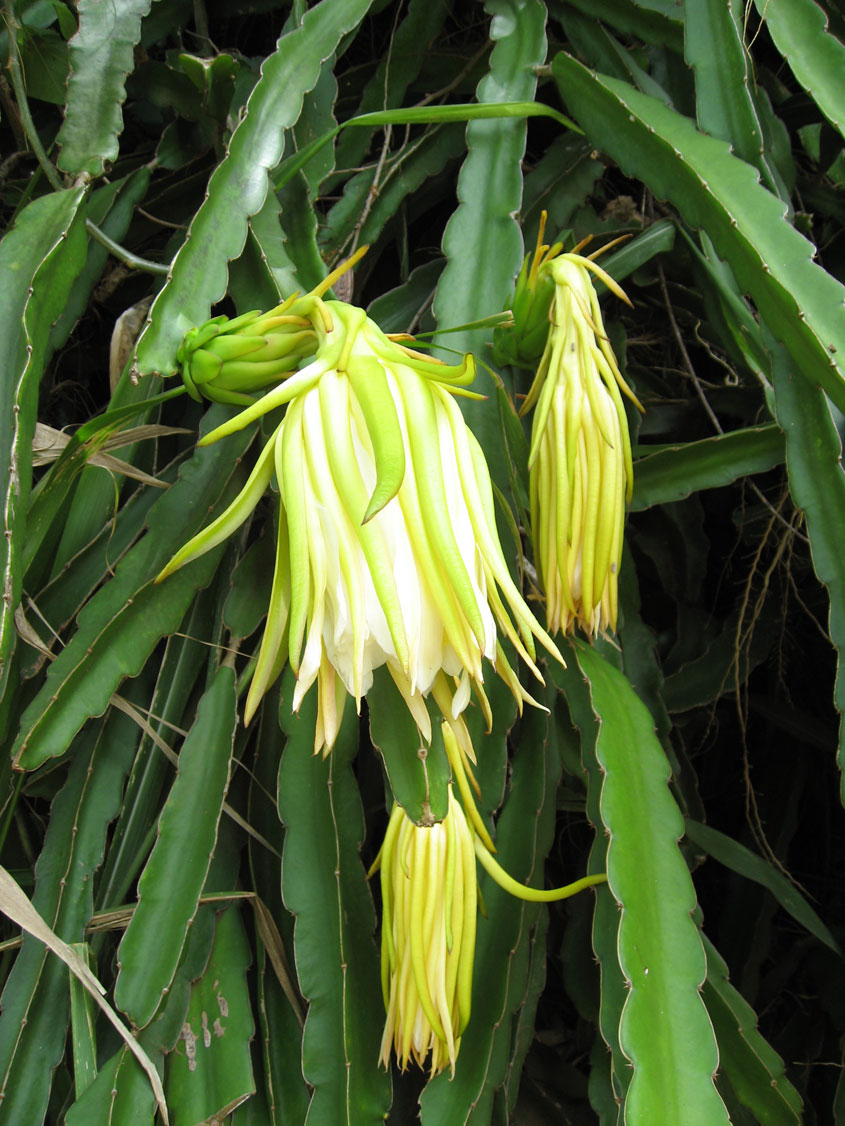
Adaptation
Hylocereus undatus possess certain adaptations that
allow the plant to survive in relatively arid conditions. For
one, H. undatus undergoes CAM (Crassulacean Acid
Metabolism) photosynthesis. Unlike in the other types of
photosynthesis, in CAM photosynthesis, plants open their stomata
during the night instead of during the day in order to reduce
water loss via evaporation. The carbon dioxide entering the
stomata at night is stored as an acid until the enzyme RUBISCO
breaks down the acid and releases the carbon dioxide when light
is present. When environmental conditions are severe, CAM plants
have the ability to CAM idle for a short period of time. In
these cases the plant is able to keep its stomata closed both
during the day and the night to prevent water loss. Carbon
dioxide needed for photosynthesis comes from the carbon dioxide
given off in respiration while the oxygen given off during photosynthesis is used for respiration.
photosynthesis is used for respiration.
Another adaptation H. undatus possesses to help it
survive dry conditions has to do with how water is transferred
in the tissues of the plant. During a period of drought it has
been shown that the water-storage parenchyma cells release water
to the chlorenchyma cells (chlorenchyma cells are parenchyma
cells which contain chloroplasts) (Nobel, 2006). This allows for
the chlorenchyma cells to maintain a positive net uptake of
carbon dioxide, which is necessary for photosynthesis. Processes
like these help H. undatus to survive in arid
conditions as well as in short periods of drought (up to six
weeks). It has also been seen that during periods of drought,
H. undatus continues to maintain stem growth and is
able to do so through phloem transport mechanisms (Nerd, 2004).
Often in plants receiving inadequate water, stem growth is
stunted, but researchers believe H. undatus may
continue its stem growth under these conditions since it is a
hemi-epiphytic plant often found in tropical forests where
growth upwards is necessary to compete for sunlight (Nerd,
2004).
Learn more about the nutrition of Hylocereus undatus.
Return to the homepage.